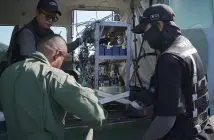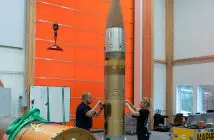
The European Space Agency has secured the largest financial commitment in its 50-year history, with Member States approving €22.1 billion in new subscriptions at the ESA Council meeting at Ministerial level (CM25) in Bremen, Germany. The agreement marks a decisive step in delivering ESA’s long-term Strategy 2040, strengthening Europe’s autonomy in space and expanding its role across science, exploration, security and commercialisation.
Ministers and high-level representatives from ESA’s 23 Member States, Associate Members and Cooperating States endorsed a significant uplift across all major programmes — including Earth observation, telecommunications, navigation, science and exploration — along with major investment in the European Resilience from Space initiative, which aims to enhance security and resilience through space-enabled services.
ESA Director General Josef Aschbacher said the 32% funding increase (17% adjusted for inflation) reflects unprecedented confidence in the agency’s role during a period of geopolitical uncertainty. “This is a great success for Europe, and a really important moment for our autonomy and leadership in science and innovation,” he said. “In the face of a challenging geopolitical situation… all States contributing to the ESA budget have put their faith in ESA to keep delivering programmes that will support European leadership in space.”
A renewed commitment to science and the search for life
In its anniversary year, ESA Member States recommitted to scientific excellence with a historic funding increase of 3.5% per year above inflation. This support will advance flagship missions in the Cosmic Vision programme such as LISA and NewAthena, while accelerating technology development for the Voyage 2050 roadmap.
A major focus is preparing the “L4” mission — an ambitious large-class mission to study Saturn’s moon Enceladus and search for signs of life. Immediate investment is required to mature technologies capable of reaching and operating at the moon’s south pole under optimal illumination.
Strengthening European security and resilience from space
Member States approved initial funding for the European Resilience from Space initiative, a dual-use framework intended to provide high-temporal, high-resolution Earth observation data through pooled satellite resources. The programme includes plans for LEO-based navigation services and secure space-based connectivity to support resilience and non-aggressive defence applications — marking a significant evolution in ESA’s mandate.
Subscriptions for this programme will remain open until 2026, giving Member States additional time to participate.
Securing Europe’s technology independence
ESA’s technology enablers receive a substantial uplift, supporting critical components, digitalisation, emerging technologies and non-dependence initiatives. This investment underpins all major missions and strengthens Europe’s guaranteed access to space.
Key areas include:
- Continued support for Ariane 6 and Vega-C
- The European Launcher Challenge and new transport-to-orbit concepts
- €3.6 billion for co-funded commercial programmes to drive private investment and scale European SMEs
- Next-generation Earth observation missions, including Sentinel-2 NG and Sentinel-3 NG Optical
- FutureEO mission development and expansion of Earth Action data programmes
Advancing Europe’s exploration capabilities
Member States committed to major exploration goals including:
- Full funding for the Rosalind Franklin Mars rover targeting launch in 2028
- Preparation of lunar missions, particularly the Argonaut lander
- Technology de-risking to support long-term European presence in low Earth orbit and cislunar space
- Short-term measures to maintain European astronaut access to the ISS through 2030
- Development of Europe’s LEO cargo return service with two demonstration missions
An interim Ministerial meeting is planned ahead of CM28 to adapt to shifts in international cooperation and commercial space station development.
Defending Earth and building new space infrastructure
Three flagship missions dominate ESA’s space safety portfolio:
- Ramses – a rapid-development mission to intercept asteroid Apophis during its 2029 encounter with Earth
- Vigil – ESA’s space-weather sentry mission, moving toward its preliminary design review
- Rise – an on-orbit servicing demonstration programme aimed at reducing future space debris
In addition, ESA will proceed with implementation of SAGA, its quantum communications demonstration satellite, and continue developing the Moonlight lunar communications and navigation network.
Expanding ESA’s presence across member states
New letters of intent have been signed:
- With Poland, to explore the creation of a security and dual-use applications centre
- With Norway, to evaluate establishing an Arctic Space Centre in Tromsø
Two major resolutions were adopted: Elevating the Future of Europe through Space and the Level of Resources for Mandatory Activities 2026–2030, setting ESA’s strategic and financial direction for the coming decade.





